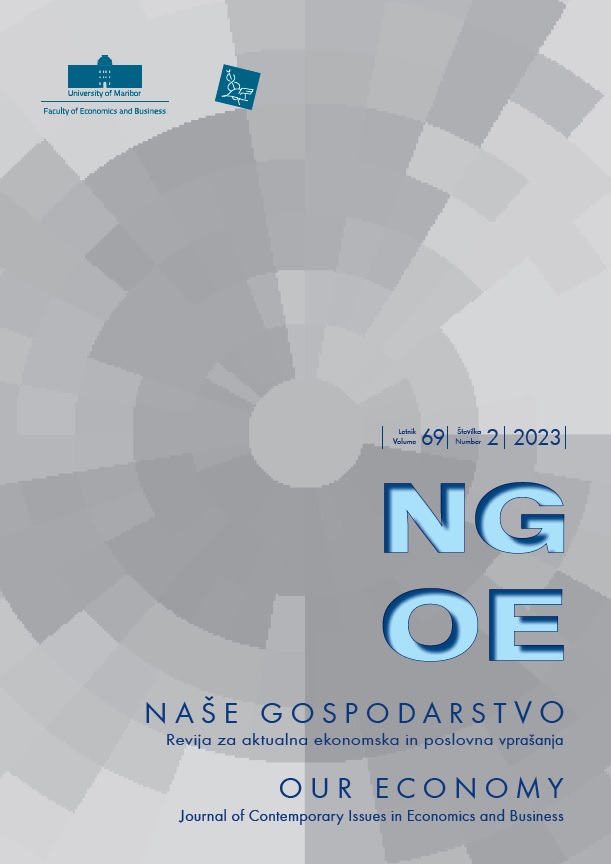The Influence of Organizational Factors on the Adoption of Energy Efficiency Measures in Companies
Keywords:
Energy efficiency, Energy management, Management maturity, Organizational factors, SerbiaAbstract
This paper aims to research the organizational factors influencing the implementation of energy efficiency measures in companies. The analysis was performed on a sample of companies from Serbia included in the World Bank Enterprise Survey. The raw data collected by the World Bank were utilized to analyze the correlation between various organizational factors and the adoption of energy efficiency measures. The analysis revealed a statistically significant correlation between management maturity and the implementation of energy efficiency measures in companies. These findings suggest that improving energy efficiency is not an isolated process but rather closely related to the maturity of management practices, highlighting the importance of comprehensive organizational development for achieving optimal energy management.
Downloads
References
Allcott, H. & Greenstone, M. (2012). Is there an energy efficiency gap? Journal of Economic Perspectives, 26(1), 3-28. DOI: 10.1257/jep.26.1.3
Antunes, P., Carreira, P., & da Silva, M. M. (2014). Towards an energy management maturity model. Energy policy, 73, 803-814. DOI: 10.1016/j.enpol.2014.06.011
Backlund, S., Thollander, P., Palm, J., & Ottosson, M. (2012). Extending the energy efficiency gap. Energy Policy, 51, 392-396. DOI: 10.1016/j.enpol.2012.08.042
Blomqvist, S., Ödlund, L., & Rohdin, P. (2022). Understanding energy efficiency decisions in the building sector–A survey of barriers and drivers in Sweden. Cleaner Engineering and Technology, 9, 100527. DOI: 10.1016/j.clet.2022.100527
Cagno, E., Worrell, E., Trianni, A., & Pugliese, G. (2013). A novel approach for barriers to industrial energy efficiency. Renewable and Sustainable Energy Reviews, 19, 290-308. DOI: 10.1016/j.rser.2012.11.007
Cantore, N. (2017). Factors affecting the adoption of energy efficiency in the manufacturing sector of developing countries. Energy Efficiency, 10(3), 743-752. DOI: 10.1007/s12053-016-9474-3
Capehart, B. L., Turner, W. C., & Kennedy, W. J. (2006). Guide to energy management. Boca Raton, USA: Crc Press.
Cooremans, C. & Schönenberger, A. (2019). Energy management: A key driver of energy-efficiency investment? Journal of Cleaner Production, 230, 264-275. DOI: 10.1016/j.jclepro.2019.04.333
Di Foggia, G. (2021). Energy-efficient products and competitiveness in the manufacturing sector. Journal of Open Innovation: Technology, Market, and Complexity, 7(1), 33. DOI: 10.3390/joitmc7010033
EC (2023). Energy use by businesses and households – statistics. European Commission – Eurostat. Retrieved from https://ec.europa.eu/eurostat/statistics-explained/index.php?title=Energy_use_by_businesses_and_households_-_statistics&oldid=583806
Economist Intelligence (2023). Energy Outlook 2023. A Report by EIU. Retrieved from https://www.eiu.com/n/campaigns/energy-in-2023/
Fresner, J., Morea, F., Krenn, C., Uson, J. A., & Tomasi, F. (2017). Energy efficiency in small and medium enterprises: Lessons learned from 280 energy audits across Europe. Journal of Cleaner Production, 142, 1650-1660. DOI: 10.1016/j.jclepro.2016.11.126
Gerarden, T. D., Newell, R. G., & Stavins, R. N. (2017). Assessing the energy-efficiency gap. Journal of economic literature, 55(4), 1486-1525. DOI: 10.1257/jel.20161360
Harris, D. (2016). A guide to energy management in buildings. Abingdon, UK: Taylor & Francis.
Introna, V., Cesarotti, V., Benedetti, M., Biagiotti, S., & Rotunno, R. (2014). Energy Management Maturity Model: an organisational tool to foster the continuous reduction of energy consumption in companies. Journal of cleaner production, 83, 108-117. DOI: 10.1016/j.jclepro.2014.07.001
ISO (2018). ISO 50001: Energy management systems – Requirements with guidance for use. Geneva, Switzerland: International Standard- ization Organisation.
Jin, Y., Long, Y., Jin, S., Yang, Q., Chen, B., Li, Y., & Xu, L. (2021). An energy management maturity model for China: Linking ISO 50001:2018 and domestic practices. Journal of Cleaner Production, 290, 125168. DOI: 10.1016/j.jclepro.2020.125168
Jovanović, B. & Filipović, J. (2016). ISO 50001 standard-based energy management maturity model – proposal and validation in industry. Journal of Cleaner Production, 112, 2744-2755. DOI: 10.1016/j.jclepro.2015.10.023
Kostka, G., Moslener, U., & Andreas, J. (2013). Barriers to increasing energy efficiency: evidence from small-and medium-sized enterprises in China. Journal of Cleaner Production, 57, 59-68. DOI: 10.1016/j.jclepro.2013.06.025
Mihic, M. M., Petrovic, D. C., & Vuckovic, A. M. (2014). Comparative analysis of global trends in energy sustainability. Environmental Engineering & Management Journal (EEMJ), 13(4). DOI: 10.30638/eemj.2014.099
Mihic, M. M., Petrovic, D. C., Vučković, A. M., Obradović, V. L., & Đurović, D. M. (2012). Application and importance of cost-benefit analysis to energy efficiency projects in public buildings: The case of Serbia. Thermal Science, 16(3), 915-929. DOI: 10.2298/TSCI110911090M
Monteiro, N. J., de Oliveira, R. M. E. S., da Costa, S. E. G., Deschamps, F., & de Lima, E. P. (2022). Energy Management Maturity Models: Literature Review and Classification. Industrial Engineering and Operations Management: XXVIII IJCIEOM, Mexico City, Mexico, July 17–20, 2022, 49-58. DOI: 10.1007/978-3-031-14763-0_5
Olsthoorn, M., Schleich, J., & Hirzel, S. (2017). Adoption of energy efficiency measures for non-residential buildings: technological and organisational heterogeneity in the trade, commerce and services sector. Ecological Economics, 136, 240-254. DOI: 10.1016/j.ecolecon.2017.02.022
Pitić, G. & Vučković, A. (2021). Organisational Factors of Innovativeness in Serbian Enterprises. Naše gospodarstvo/Our economy, 67(2), 20-28. DOI: 10.2478/ngoe-2021-0009
Schwab, K. (2016). The Fourth Industrial Revolution. Geneva, Switzerland: World Economic Forum.
Soepardi, A., Pratikto, P., Santoso, P. B., Tama, I. P., & Thollander, P. (2018). Linking of barriers to energy efficiency improvement in Indonesia’s steel industry. Energies, 11(1), 234. DOI: 10.3390/en11010234
The World Bank (2019). The Serbia 2019 Enterprise Survey Data Set. Retrieved from https://www.enterprisesurveys.org/en/data/explo-reeconomies/2019/serbia
The World Bank (2020). The Serbia 2019 Enterprise Survey. Retrieved from https://microdata.worldbank.org/index.php/catalog/3721
Vučković, A. & Pitić, G. (2022). New technologies in energy management systems of buildings. Ekonomika preduzeća, 70(1-2), 75-86. DOI:10.5937/EKOPRE2202075P
Downloads
Published
Issue
Section
License
Copyright (c) 2023 Aleksandar Vučković

This work is licensed under a Creative Commons Attribution-NonCommercial-NoDerivatives 4.0 International License.
